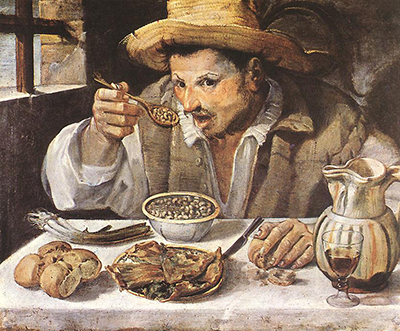 Buy Art Prints Now
Buy Art Prints Nowfrom Amazon
* As an Amazon Associate, and partner with Google Adsense and Ezoic, I earn from qualifying purchases.
The Bean Eater is one of Annibale Carracci's most famous paintings and provides an honest depiction of every day life in Italy during the 16th century.
This highlight from the Baroque period can now be found at the Palazzo Colonna of Rome and is one of the highest profile paintings to be found at this prestigious venue. It is a relatively small artwork at just over half a metre tall and wide and was completed in oils, a medium which came from Flemish regions several centuries earlier and eventually replaced the Italian artists' previous preference of using egg tempera.
Mangiafagioli, to use its original Italian name, features a young man sat at a table enjoying a large bowl of beans with some bread and a glass of wine. The different elements on the table appear to have been arranged for the purposes of the artist himself rather than the sitter. He would not have wanted to place the glass of wine behind his jug, for example. It is possible that in fact he had been joined by another diner sat near the viewer of this painting. The elements in this painting essentially produce a still life and portrait combined, something not seen commonly during this artistic period.
It was not that fashionable for artists to address the lives of the poor and impoverished during the Renaissance and Baroque periods. Most would supplement their income with highly paid commissions for notable individuals and institutions of their day. Additionally, many were much less interested in the lives of those who perhaps they regarded as beneath them, socially and intellectually. But this was certainly not the case for all artists, with several exceptions featuring amongst the finest of all from this period of several centuries.
The Bean Eater was not Carracci's only venture into the lives of normal folk, with Butcher's Shop also featuring notably within his overall career highlights. Besides this artist there were also several Flemish artists who were inspired by the lives of local people, most famously Peasant Bruegel who picked up this nickname for his frequent depictions of local festivals and special occasions.




